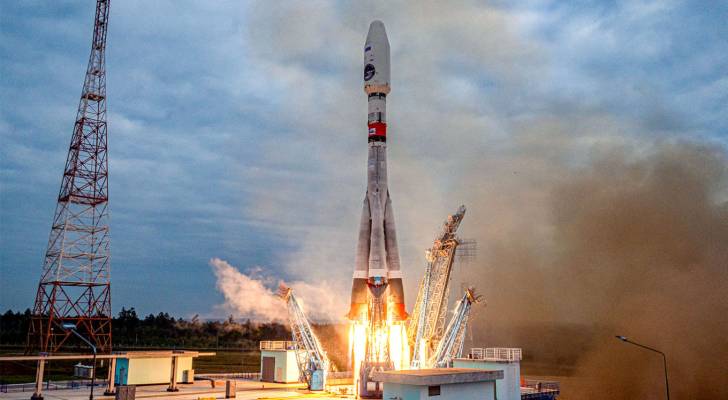Russian Interplanetary Missions Schedule Revisions: Lunar Launch Moved to 2028 and Venus to 2036

Russian Interplanetary Missions Face Significant Schedule Revisions
Recent authoritative statements have revealed substantial adjustments to the timelines of two major Russian interplanetary endeavors. These projects, both seeking to advance scientific knowledge far beyond Earth’s orbit, have had their launch schedules extended by several years. The first mission targeting lunar exploration is now expected to depart in 2028 instead of the previously anticipated date. Meanwhile, a parallel mission focused on Venusian research has seen its launch deferred to 2036, considerably later than initial projections.
The revised timelines underscore the complexity and challenges inherent in preparing deep space missions, especially those requiring cutting-edge technology and extensive coordination among scientific and engineering teams. This cautious approach reflects a prioritization of mission readiness and ensuring that objectives can be fully achieved when launched.
These developments come amid broader national plans to enhance space research and technology capabilities. The overarching governmental initiative guiding these efforts will enjoy a considerable infusion of financial resources, with over one trillion rubles allocated from the federal treasury. Additional budgetary support surpassing hundreds of billions of rubles is projected to come from alternative funding mechanisms, highlighting the strategic importance accorded to space exploration within the country’s scientific agenda.
Legacy and Scientific Importance of the Venusian Mission
The mission dedicated to unveiling Venus’s atmospheric mysteries commenced its conceptual development phase in 2021. Drawing heavily upon the pioneering work of previous decades, this project honors and extends traditions from an era when Soviet spacecraft achieved numerous planetary firsts. By building upon that legacy, the current plans aim to deepen understanding of Venusian geology and atmospheric dynamics using advanced instrumentation.
Such continuity not only strengthens scientific inquiry but also helps preserve crucial expertise and institutional knowledge. The intended research program is designed to probe Venus’s enigmatic environment, potentially shedding light on fundamental processes affecting terrestrial planets.
Originally slated for launch in 2029, the delay to 2036 allows for refinement of technical elements and scientific instrumentation, ensuring robustness and maximizing mission potential upon deployment. This extended schedule also provides an opportunity to incorporate recent technological advances and address any preceding developmental challenges that may have arisen.
Lunar Exploration Mission and Program Synergies
Regarding the lunar-focused endeavor, originally planned for lift-off in 2027, rescheduling to 2028 aligns with broader adjustments across the sector. Ensuring synchronization among overlapping space initiatives has been highlighted as a critical priority by national scientific authorities. Enhanced coordination across agencies and projects aims to optimize resource allocation, streamline launch preparations, and bolster overall program efficiency.
This collaborative approach is intended to reduce redundancies and facilitate shared technical solutions, ultimately leading to a more integrated and effective pursuit of space exploration goals. Such synergy is particularly vital given the ambitious nature and scale of upcoming missions within the national portfolio.
Moreover, the project continues to symbolize a vital step in extending systematic exploration of the lunar environment, contributing to long-term objectives that encompass scientific research, technology demonstration, and eventual support for human activities beyond Earth.
Financial Commitments and Strategic Outlook
Funding commitments reflect expansive ambitions for scientific innovation and space technology development over the next decade. The allocation from the federal budget, augmented by substantial contributions from extra-budgetary funds, equips the national efforts with significant fiscal stability. These resources underpin both the technical development of key missions and the necessary infrastructural and organizational elements supporting their execution.
Such robust financial backing is imperative given the complexity of planetary exploration and the need for meticulous planning, testing, and risk mitigation to assure mission success. The prudent extension of launch timelines exemplifies a methodical strategy that favors comprehensive preparedness over rapid deployment.
The Path Ahead: Coordination as a Cornerstone
Close integration of various space programs has been emphasized as essential to navigate the increasingly multifaceted landscape of national space endeavors. Enhancing collaboration between research entities, engineering teams, and administrative bodies will facilitate smoother operational execution and help realize the full scientific potential of forthcoming missions.
By fostering stronger cohesion across projects, the responsible authorities aim to create a resilient framework that can adapt to emerging challenges while adhering to strategic priorities. This approach ensures that future space ventures are conducted with a high degree of professionalism and effectiveness.
In sum, the recalibration of these mission schedules, alongside reinforced financial and organizational frameworks, reflects a concerted effort to advance planetary exploration responsibly and systematically. These developments signal sustained commitment to exploring the nearest celestial neighbors, furthering fundamental scientific understanding, and maintaining a competitive edge in space research and technology.
